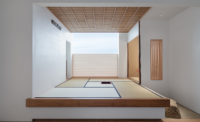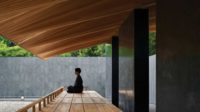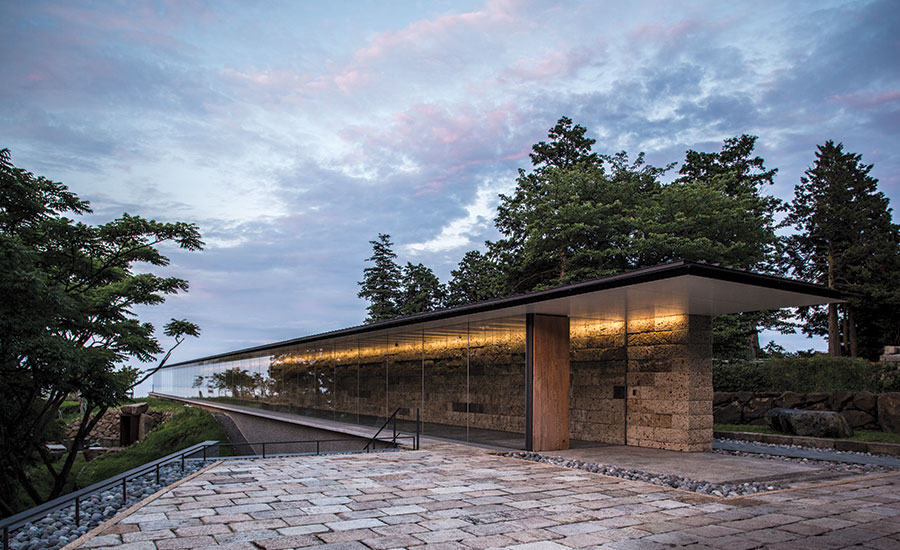Enoura Observatory by Hiroshi Sugimoto
Odawara, Japan
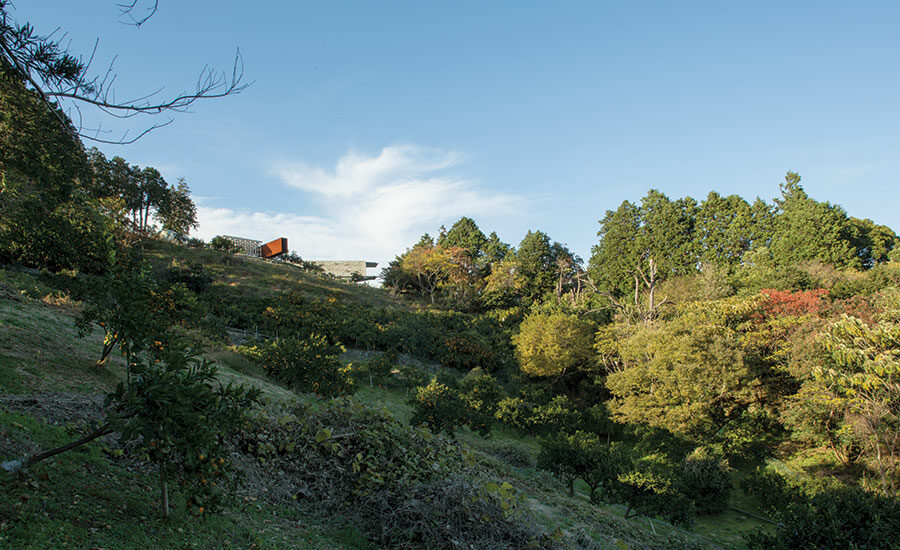
The glass stage, Winter Solstice Tunnel, and Summer Solstice Gallery are perched atop the mountain.
Photo © Sugimoto Studio, courtesy Odawara Art Foundation
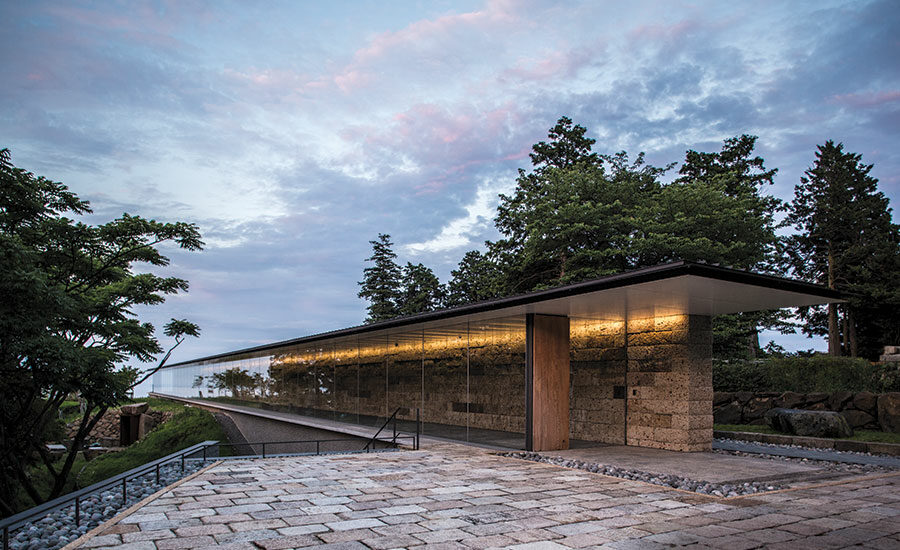
The long, narrow, cantilevering gallery spans 328 feet.
Photo © Sugimoto Studio, courtesy Odawara Art Foundation
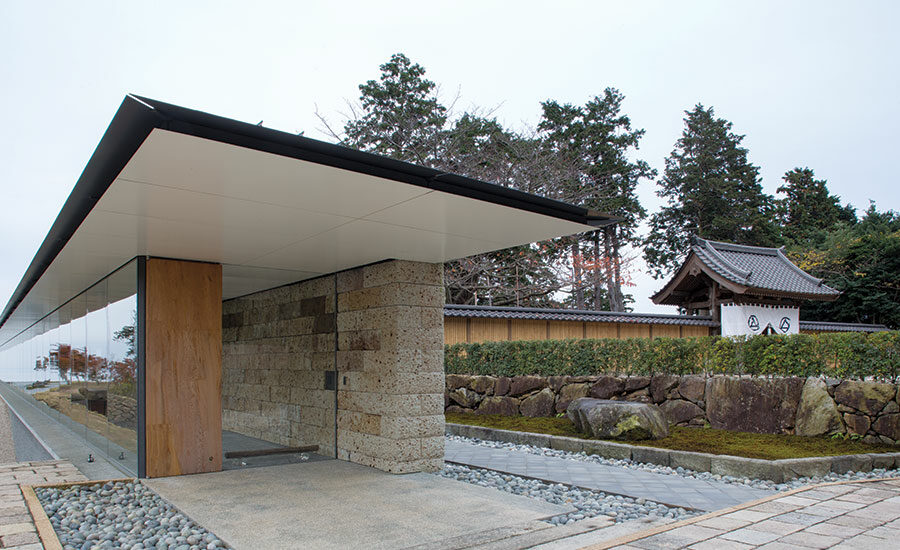
The antique Meigetsu Gate is adjacent to the Summer Solstice Gallery.
Photo © Sugimoto Studio, courtesy Odawara Art Foundation
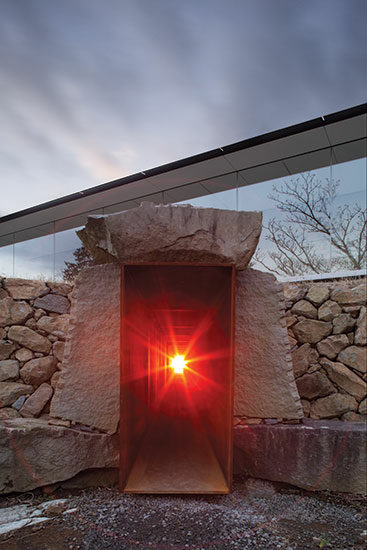
Sunlight comes through the Winter Solstice Tunnel.
Photo © Sugimoto Studio, courtesy Odawara Art Foundation
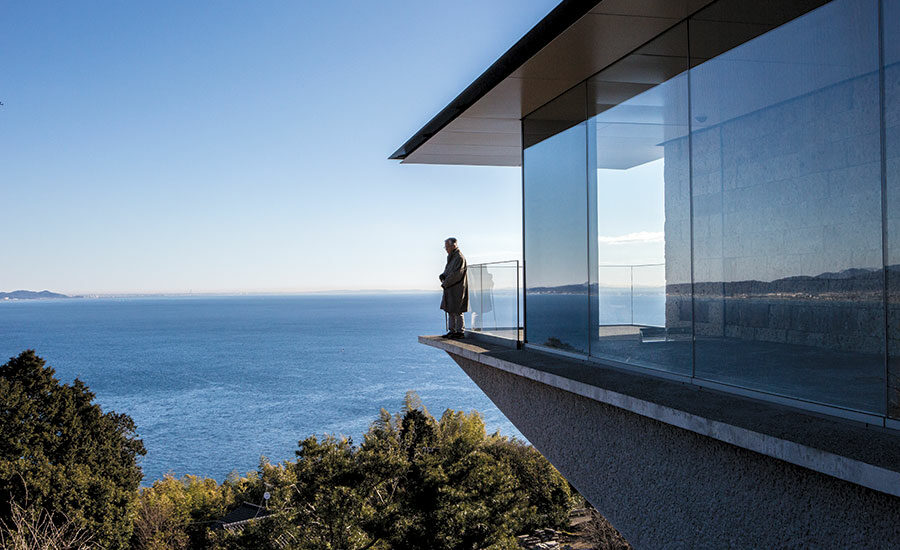
Sugimoto stands at the ledge of the gallery.
Photo © Sugimoto Studio, courtesy Odawara Art Foundation
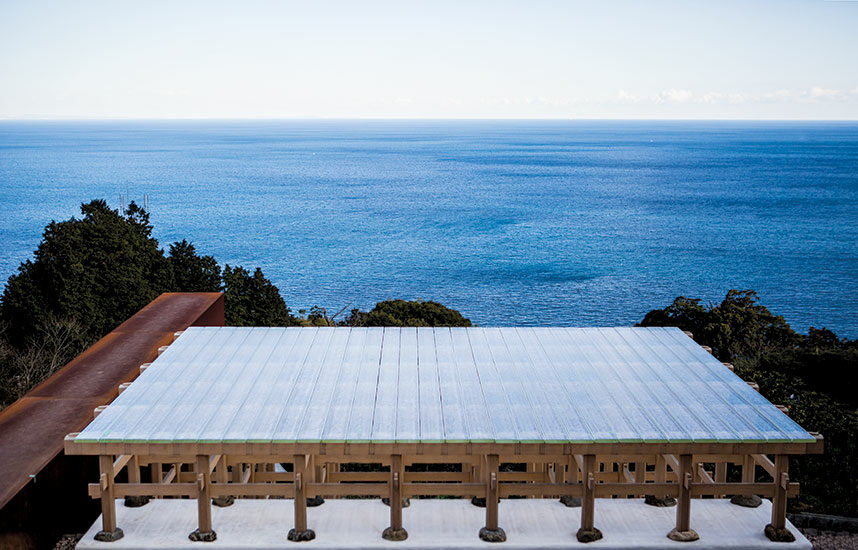
The glass stage is mounted on traditional wood supports.
Photo © Sugimoto Studio, courtesy Odawara Art Foundation
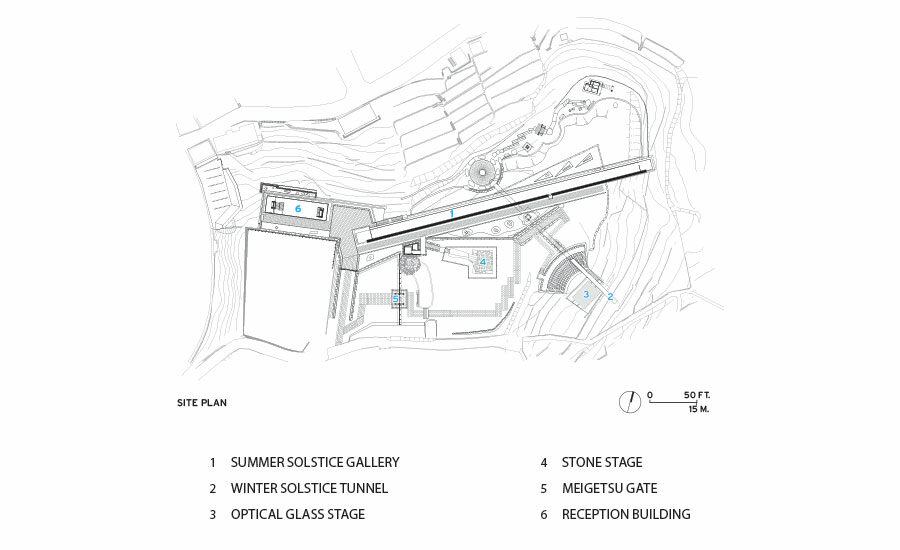
Image courtesy Hiroshi Sugimoto







Overlooking the sea and activated by the sun, the Enoura Observatory is an exquisite collection of new buildings, antique architectural fragments, and historic stone artifacts, curated by the world-renowned photographer, and self-styled designer, Hiroshi Sugimoto. Like the artist’s signature images of misty seascapes and mysterious movie house interiors, many of these elements evoke another time. But together they anticipate a future when, Sugimoto envisions, the buildings will topple, nature will grow wild, and the site will become a ruin for future generations to discover.
Additional Content:
Jump to credits & specifications
The Observatory is located in the Enoura District of Odawara City, 55 miles southwest of Tokyo, and is open to the public by reservation. As you arrive at the site, you see a stone-paved drive ascending to the Reception Building and the Summer Solstice Light-Worship 100-Meter Gallery. On one side of the gallery, a stone-studded path leads to the Old Naraya Gate and the Uchoten Tea House. On the other stand two outdoor Noh theaters, the Stone Stage and the Optical Glass Stage, a huge slab of optical-grade glass, resting on wood scaffolding erected by traditional carpenters, plus the Meigetsu Gate. Relics from the past, both gates were given to Sugimoto, who had them moved and rebuilt on-site. Partially embedded in the earth, the Winter Solstice Light-Worship Tunnel crosses beneath the gallery, forming a giant X. While the gallery aligns perfectly with the sun’s first rays on the longest day of the year, the tunnel does the same on its shortest, enabling dawn light to fill each one once a year.
Unsurprisingly, this ambitious project was more than a decade in the making. Sugimoto’s notion of illuminating space with the winter-solstice sun dates back to 2006. But the possibility of realizing this idea arose after Sugimoto established the Odawara Art Foundation in 2009. Intent on building a public facility devoted to Japanese arts and architecture, the foundation purchased this property, an 11-acre citrus grove facing Sagami Bay in front and Hakone Mountain in back.
Yet transforming the hilly landscape into the center was no simple feat. For professional know-how, Sugimoto looked to his longtime collaborator, architect Tomoyuki Sakakida, with whom he established the design firm New Material Research Laboratory in 2008. “My job is to turn [Sugimoto’s] ideas into buildable architecture,” explains Sakakida. To date, the duo have completed several interior projects, including the renovation of a lobby garden at the Japan Society in New York and the lobby café at the Hirshhorn Museum in Washington, D.C., opening this month.
As their first architectural work, the Enoura Observatory had to incorporate construction conventions and code requirements. But its design process was something else altogether. “It was more like creating a work of art,” says Sakakida, recalling Sugimoto’s on-site, design-build methodology. Using his eye as his guide and his cane as his measure, the photographer carefully positioned and repositioned every component.
For the tunnel, this began with a six-year study of the sun’s course, used to set the structure’s precise location. After that, prefabricated 13-foot-long boxes of weathering steel were welded together on-site, resulting in a 230-foot-long tube of shadowy space open at both ends. Like camera viewfinders, these rectangular apertures frame the scenery in either direction.
By contrast, the gallery is a light-filled exhibition space placed in relation to the horizon, mountain ridge, and summer-solstice sun. Measuring 328 feet (100 meters) both in length and above sea level, the building is encased by glass panels and a volcanic Oya stone wall (the same material Frank Lloyd Wright used for Tokyo’s Imperial Hotel). Concealed by the rock’s speckled surface, a reinforced-concrete structure supports the cantilevered roof. The floor slab, which juts out 39 feet from the sloped ground plane, is buttressed by a massive concrete base resembling a ship’s prow. Also built into the hillside, the two-story Reception Building is entered on the upper level, which contains a single room holding the information desk and a 16-foot-long cedar conference table. For the construction of his tradition-inspired teahouse and the antique gates, Sugimoto enlisted a coterie of skilled artisans.
One area where the photographer had free rein was the layout of the stone elements. An avid collector of rocks, both natural and shaped by the human hand, Sugimoto integrated many into the landscape, including Buddhist relics, ancient column bases, vintage pavers, and a 23-ton slab of Takine stone transported from Fukushima Prefecture. While some were reborn as terraces or walkways, others stand as individual points of interest to be savored. “Every stone has its own story,” commented the artist during a recent talk at the Japan Society.
With their past lives and previous incarnations, the rocks contribute to the otherworldly atmosphere of the Enoura Observatory. But the site’s spirituality is most evident during those fleeting moments when sunlight magically turns the tunnel interior bright red. This is a place to observe and appreciate the sun’s eternal cycle. And therein lies the real power of Sugimoto’s architecture.
CreditsDesigner: Hiroshi Sugimoto
Associate architects: Tomoyuki Sakakida Architect and Associates, New Material Research
Engineers Jun Sato Structural Engineering (structural); EOSplus (m/e/p); Ataka Bousai Sekkei (fire)
Client Odawara Art Foundation |
|

